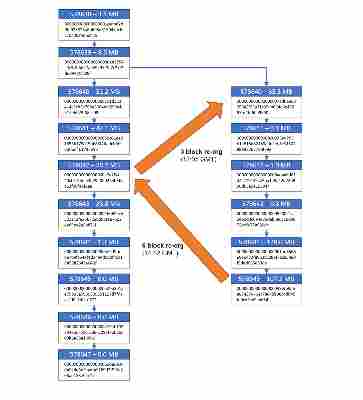The head of the United Nations’ cybercrime and anti-money-laundering branch has warned that investigating online child sexual abuse has become considerably more difficult since the advent of cryptocurrency.

Neil Walsh told Australia’s ABC the true scale of online child sexual abuse is much, much bigger than many realise, and that cryptocurrency — like Bitcoin — has added an additional layer of anonymity that favors perpetrators.
“It’s what makes it really hard for cops [and] investigators to manage some really big risks. Because in the past, when we looked at some of those really big high threat areas, like kids getting abused online, it had to be paid for, and now with the use of cryptocurrencies, it’s exceptionally difficult for investigators to track and manage that risk,” Walsh told ABC.
“When we look at some of the really high-risk crime, where we see kids, and I’m talking babies – very, very young, six months old and younger, who are in pay-per-view, live, online child sexual abuse streaming websites that’s getting paid for by cryptocurrencies, we need to have some sort of options,” said Walsh. “We need to know how we try and challenge that threat, and reduce the risks for kids and reduce the opportunities for criminals to get involved.”
Regulating cryptocurrency exchanges is one of those options. In particular, Walsh views forcing exchange users to reveal their identities as necessary to “keep the most vulnerable in our society safe.”
The thing is, Walsh believes adhering to strict Know-Your-Customer and Anti-Money-Laundering regulations is “not really a large amount of risk,” which isn’t likely to sit well with cypherpunks and cryptocurrency purists.
The pseudonymity provided by Bitcoin is also referred to as a “layer of secrecy” in the interview, which is rather loaded language, but understandable given the context.
In the end, Walsh reinforced that regulating global use of cryptocurrency is going to take lots of different brains. “It’s going to take technologists, policymakers, philosophers, the whole nine yards,” said Walsh.
You can listen to the full interview here .
BitcoinSV’s blockchain is struggling with its enormous 128MB blocks
The Bitcoin Satoshi Vision (BitcoinSV) blockchain has suffered a series of “block re-oganizations,” putting the integrity of its network in question.

“ On 18th April 2019, our Bitcoin Cash SV [sic] node experienced two block re-organizations. First, a three block re-organization, followed by a six block re-organization,” tweeted BitMEX Research, the analysis arm of digital asset exchange BitMEX.
Block re-organizations occur when cryptocurrency miners are forced to “orphan” blocks after they’ve been mined. This can happen when the network is too slow to “propagate” blocks effectively, and bigger blocks (like the ones featured by BitcoinSV) are especially susceptible to orphaning.


The last time this occurred was in November 2018, when two blocks – one 16MB and another 13MB in size – were orphaned for being too large. At the time, BitMEX researchers also blamed bad network connectivity.
This makes for three BitcoinSV block re-organizations in six months.
Bigger blocks could be left behind by the longest chain
BitcoinSV is a fork of Bitcoin Cash (which is a fork of Bitcoin). It raised Bitcoin Cash‘s block size limit from 32MB to 128MB. Bitcoin‘s block size limit is still 1MB .
Whiteblock CEO Zak Cole told Hard Fork that when blocks become too large, they take much longer to be processed by the network than smaller ones.
“The longer it takes to propagate throughout the network, the higher the likelihood of it becoming an orphan,” Cole said. “The larger the object, the more likely it will be that it isn’t transported in its entirety and will likely have to be rebroadcast.”
BitcoinSV uses Proof-of-Work to come to consensus over which transactions (and blocks) to trust. Miners essentially present their own versions of the BitcoinSV blockchain for validation.
The network accepts the “longest chain” of blocks as the most legitimate record of transactions, but imagine a miner mines a relatively large block and presents it to the network for validation.
Now, at the same time, another miner shares a smaller block, but their transactions are written to the blockchain first. In this scenario, the second miner has effectively stolen the first miner’s intended spot in the trustworthy “longest chain.”
The miner with the bigger block is stuck with no place to put it. They’re forced to “orphan” the block, and the transactions inside of it are effectively cancelled. This means the block was mined, but not included in the blockchain.
This could be a dream scenario for 51% attackers
While this might seem like a system working as intended, regular block orphaning could have major consequences. Cole explained to Hard Fork that devastating fork events can occur when different versions of blockchains meet with conflicting block histories.
“When a significant portion of nodes receive ‘Version A’ of the chain and then a similarly significant portion of nodes receive ‘Version B,’ everything will go to hell,” Cole told Hard Fork. “If blocks are too large to propagate throughout BitcoinSV’s mining pools effectively, they’re all going to be deadlocked for a period of time.”
These scenarios present conditions which significantly increase the likelihood of ‘ double-spends .’ These attacks involve spending cryptocurrency with intent to reverse the transactions by assuming 51 percent (or more) of the network’s total computing power with a “ 51-percent attack .”
The thing is, orphaned blocks ‘distract’ network participants from working with the ‘correct chain.’ Having multiple active versions of a blockchain makes for less computing power dedicated to the longest version of the blockchain.
This means an attacker might not even need to control 51 percent of a network’s hash power to double-spend, they could actually find success with much less.
“Large portions of the available network hashing rate is going to waste, which lowers the total overall security of the network.” warned Cole. “As the orphan count rises, it lowers the total amount of hashing power needed to engage in a ’51-percent attack.'”
OK – but is this an attack?
A number of cryptocurrency services have recently removed support for BitcoinSV , after Craig Wright and his proponents launched legal action against prominent community members – one of which is a pseudonymous Twitter space-cat .
It’s still unclear whether BitcoinSV’s recently orphaned blocks were malicious. Cole says re-organizations aren’t necessarily indicative of an attack, but given the current climate , he doesn’t rule out this scenario.
BitcoinSV indeed boasts a tiny fraction of Bitcoin’s hash power , but Cole warns fixing high orphan rates isn’t simply a matter of recruiting more miners to the network.
“[BitcoinSV’s] block sizes are massive. I’d say it’s not an attack, but it’s definitely a possibility if someone were clever enough to know how to exploit the suboptimal performance,” said Cole.
“It’s not so much to do with hashing power as it large block times, large block sizes, and a suboptimal P2P [peer-to-peer] networking stack,” he added.
Hard Fork reached out to nChain, the firm behind BitcoinSV’s software, to ask about this unusual activity. Unfortunately, no BitcoinSV reps were immediately available for comment. We’ll update this piece accordingly should we hear back.
Cryptocurrency scammers conned Australians out of $14.8M in just 7 months
Cryptocurrency investment scams in Australia cost victims a record $14.76 million between January and July this year.

That’s according to the Australian Competition and Consumer Commission (ACCC). The commission states that many of these fraudulent operations leverage social media platforms, fake celebrity endorsements, or online trading platforms that are made to look legitimate in an attempt to attract prospective investors .
In a statement promoting a scheme seeking to raise awareness about fraudulent activity in the country, ACCC Deputy Chair Delia Rickard urged citizens to learn about modern scams to stay protected.
“People need to update their idea of what a scam is so that we are less vulnerable. Scammers are professional businesses dedicated to ripping us off. They have call centers with convincing scripts, staff training programs, and corporate performance indicators their ‘employees’ need to meet,” Rickard added.
This latest figure comes after the ACCC said in April that fraudsters had netted $4.3 million in cryptocurrency scams last year, representing a significant increase of 190 percent when compared to 2017.
On a global level, a report by CipherTrace, a company developing cryptocurrency and blockchain tracing and security capabilities, found that cryptocurrency scammers have swindled a staggering $4.26 billion so far this year.
Cryptocurrencies such as Bitcoin are volatile by nature, and their upward price movements often trigger interest from scammers , who seek to capitalize on the rising price to entice investors with typically unrealistic returns.
My advice? Be skeptical. Beware of any internet ads , celebrity endorsements or “unmissable opportunities” and more importantly, do your homework. If something sounds too good to be true, it probably is.
You wouldn’t give a stranger on the street a wad of cash without any questions asked, well, investing in cryptocurrency shouldn’t be any different.
Disclaimer: This is not investment advice. Readers are advised to do their own research before investing in Bitcoin or other cryptocurrencies.











